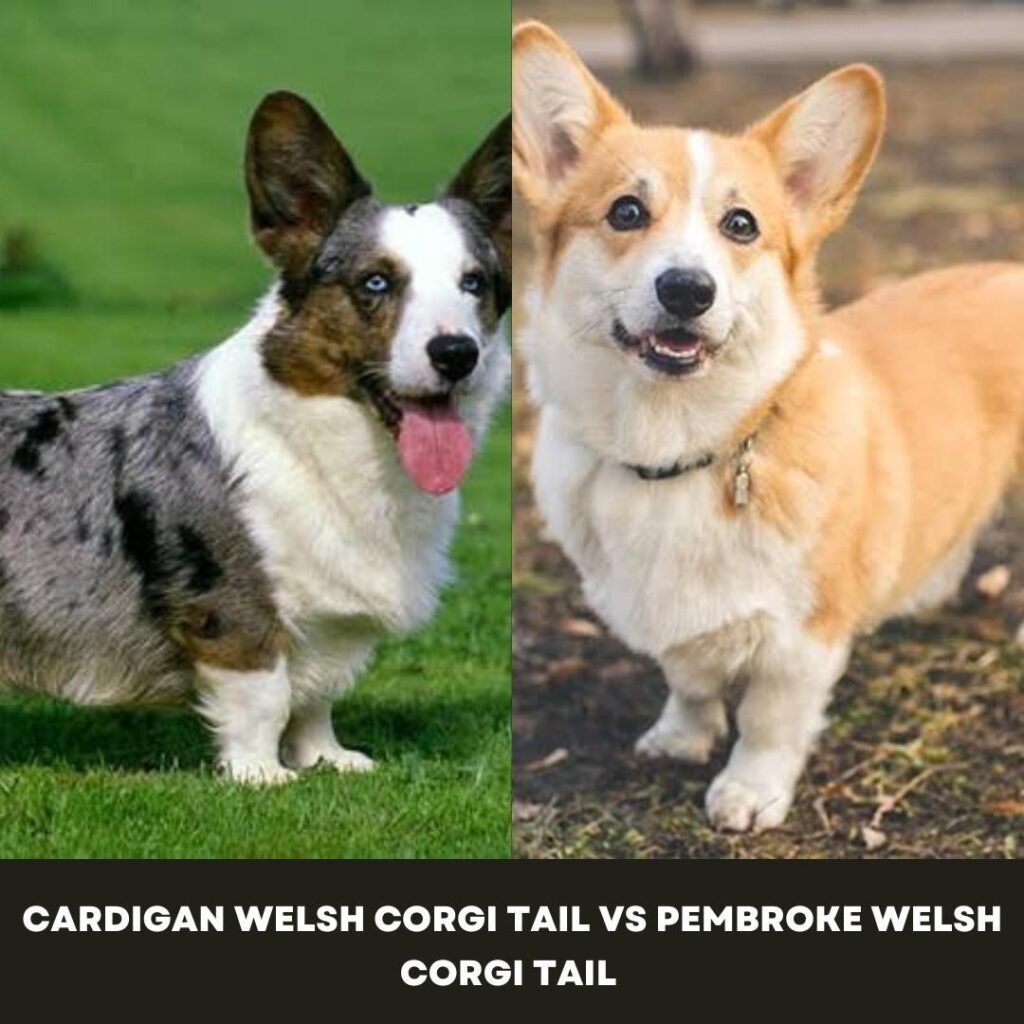Corgis are a charming little breed of dog that has taken the world by storm. These sweet-looking and sturdy dogs are native to the Welsh countryside, where they were used as herding dogs.
These sweet pups have become famous for their big personalities and even bigger tails. But are Corgis born with tails? It turns out this isn’t very common in these types of dogs, but it does happen from time to time. Keep reading to discover more about whether or not Corgi puppies are born with tails.
Are Corgis Born with Tails? The answer!
Are Corgis born with tails? This is a question that many dog owners have asked, and the answer is a little bit complicated.
The short answer is yes, Corgis are born with tails. However, in some cases the tail may be partially or completely removed during the puppies’ first few weeks of life.
This is a pretty common procedure in the veterinary world, and is usually done to prevent the possibility of future health problems. If a tail is left uncut, there’s a risk that it could become tangled or caught on something, leading to serious injury or even death.
If you’re wondering which types of Corgis have tails and which don’t, let’s start with the Pembroke Welsh corgi?
The Pembroke Welsh corgi is born with a long, bushy tail that is often docked (cut) by breeders. That is why they are often called dogs without tails. This is done due to the traditions and to make them help while herding.
The Cardigan Welsh corgi, on the other hand, is born with a long, fluffy tail and they are often called as dogs with tails. They can retain their tails forever.
So, while Corgis are technically born with tails, in some cases those tails may not be there for very long. It’s ultimately up to the individual dog owner to decide whether or not they want to have their puppy’s tail removed.
Pembroke Welsh Corgi tail vs Cardigan Welsh corgi tail

Cardigan Welsh corgis are known for their long, elegant tails.
Corgi tails are naturally floppy and carry an air of grace and elegance about them. They can be curly, straight or even flat – but no matter how they look, they are all still adorable.
Cardigan Welsh corgi tails have a waiver texture than Pembroke Welsh corgi’s tails; they are not as tightly coiled as Corgi tails might be.
The Cardigan Welsh corgi’s tail is generally smaller than its Pembroke Welsh corgi counterpart’s tail; it’s also more compact than its Corgi cousins’ tails. However, Pembroke’s tail is docked at an early age.
Cardigan Welsh corgis’ tails are always naturally curly and can range from short to very long depending on the individual dogs build.
A longer tail means that it can make up for the shorter stature of this lively breed. However, some Cardigan Welsh corgis may have straight or wavy coats that make their tails look shorter than they actually are.
What Does a Corgi Tail Look Like?

A corgi’s tail comes in all shapes and sizes. If your pup is born with a tail, it will be about the same length as their back end.
It will probably be thicker at the base and taper off towards the tip, but not as much as it does in an adult corgi.
Corgis’ tails are almost always curly, especially when the pup is young.
If their tail isn’t curly, this could be a sign that it was docked improperly. Tails can also be straight, but this isn’t very common.
If your corgi’s tail is straight, it will likely be longer than their body.
When Do Corgis Grow Their Tails?

If your Corgi is born with a tail, it will probably be docked when they are a few days old. This is a tradition among many corgi breeders. This tradition is mostly amongst the Pembroke Welsh corgis.
If your breeder docks tails, you should expect to have your puppy’s tail removed before you take them home.
You’ll likely have a vet remove their tail when they are a few days old so that there won’t be any blood or pain involved.
If you have a puppy that isn’t yet old enough for their first vet visit, you’ll want to ask your breeder what to expect.
Your breeder may recommend that you bring your puppy to the vet as soon as possible so that their tail can be removed.
Or they may advise you to wait a few days until the little corgi is strong enough to handle having their tail docked.
Why Do Some Corgis Have Tails and Some Don’t?
Why do some corgis have tails and some don’t? That’s a question that has puzzled scientists and corgi enthusiasts for years. And while there is still no definitive answer, there are a few theories that might offer some insight.
One theory is that the tail is an evolutionary leftover from when corgis were bred with wolves. Wolves are known to have tails, so it’s possible that the corgi’s tail is an adaptation from that breeding.
Another theory is that the tail provides balance and stability for the dog. This is particularly important since corgis are bred to be working dogs and need to be able to run and herd livestock effectively.
In most cases, the corgis’ tails are docked when they are puppies, that’s why they don’t have tails. This is one of the prominent reasons.
If your Corgi is born with a long, bushy tail, it could be a result of inbreeding.
If the corgi is a Pembroke Welsh corgi, they may be born with a short tail because that is what their parents had but their tails will be docked in 2-5 days.
If the corgi is a Cardigan Welsh corgi, they may have a long tail as their tails are not docked.
Natural bobtail Corgis do exist, but they’re not nearly as common.
Inbreeding can cause problems with the puppies’ health, so it’s something you want to avoid.
If you notice that your Corgi’s tail is long and you know that the parents aren’t related, it’s possible that their long tail was a fluke.
Whatever the reason, one thing is for sure: whether a corgi has a tail or not doesn’t make it any less adorable!
Is Tail Docking Cruel or Humane?

This question can spark a debate among dog lovers. Many people believe that it is inhumane to clip a puppy’s tail, while others consider it a harmless procedure.
On the one hand, docking a corgi’s tail can be seen as cruel and inhumane.
By removing part of their tail, you’re essentially mutilating their body without their consent. It’s also been shown that dogs who have their tails docked are more prone to health problems, such as infection and arthritis.
On the other hand, some people believe that docking a corgi’s tail is a humane practice that helps keep them healthy and safe.
Dogs with docked tails are less likely to get injured or caught in things, and they’re also less susceptible to parasites and infection.
What Are the Consequences of Tail Docking?
Corgis, like all dogs, use their tails for multiple things including balancing, communicating, and keeping bugs away.
Corgis are especially good at scaring away bugs thanks to the way their tails wag.
A corgi’s tail acts like a fly swatter when they wag it rapidly. It pushes away the bugs that might otherwise land on them and bite.
Without a tail, corgis don’t have this protection against insects! Even though corgis aren’t born with tails, this doesn’t mean that they don’t need them.
Corgis use their tails to communicate with each other and with other animals. Without a tail, they could miss out on important information about their environment!
Final words
Corgis are clever and vivacious dogs that love attention. They are also incredibly sweet and devoted to their owners.
If you are thinking about getting a Corgi, you should know that you might have to deal with their long tail.
Corgis can’t really do much with their tails. They can’t wag them like other dogs, and they can’t pick them up or hold them like cats can.
Corgis could use their tails to swat flies and other pests, but they don’t! Their long tails are more of a hassle than they’re worth. Corgis are just fine without their tails, and they don’t miss them at all!




